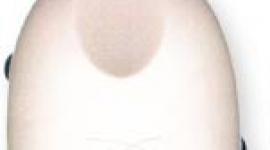Non-Pharmacological Possibilities for Treating Female Sexual Dysfunction Now on the Horizon
There has been a tremendous amount of attention paid of late to the potential usefulness of pharmaceutical options for Female Sexual Dysfunction (FSD). However, little, if no attention, has been paid to non-pharmaceutical options for treating organically based FSD. Up to now, the only option that has been investigated for women is a clitoral therapy device called the EROS-CTD. This device actually creates a gentle suction over the clitoris and the surrounding tissue, with the intention of increasing blood flow to the area and enhancing lubrication and sensation.
The principle behind this device is the idea that clitoral stimulation and tumescence (engorgement due to increased blood flow) play an important role in female sexual arousal and overall sexual satisfaction. In normally responsive females, engorgement occurs when sexual arousal results in smooth muscle relaxation and arterial wall dilation within the clitoris. The CTD device was designed to not only increase blood flow and therefore sensation and lubrication, but also to potentially serve a therapeutic purpose, enhancing overall clitoral blood flow over time.
The EROS-CTD was evaluated in a two-center pilot study of 25 patients, 8 pre-menopausal and 6 post-menopausal women with complaints of Female Sexual Arousal Disorder (FSAD), and 4 pre-menopausal and 7 post-menopausal women with no sexual function complaints. The goal was to evaluate the safety and efficacy of the EROS-CTD treatment for enhancing subjective arousal in women with sexual arousal disorder in the areas of genital sensation, vaginal lubrication, ability to reach orgasm and general sexual satisfaction.
A complete medical history and physical examination was performed on each patient and a brief psychosexual history was taken by a sex therapist to be certain that there was not a primary emotional or relational basis for the woman's complaint. This was because no drug therapy or device will prove useful to a woman who's sexual function complaints are based on relational or emotional factors. Patients who had a history of depression, unresolved sexual abuse, hypoactive sexual desire disorder (not caused by sexual function complaints), diabetes, dyspareunia or certain other risk factors were excluded from the study.
Patients were asked to use the EROS-CTD Treatment in the privacy of their home with or without a partner. For every home session, each patient was asked to fill out the Female Intervention Efficacy Index (FIEI), (Chronbach's Alpha Coefficient .81), developed by Berman and Berman, measuring subjective reports of changes in lubrication, sensation, orgasm and sexual satisfaction following use of the EROS-CTD.
| Results after using device |
Sensation | Orgasm | Sexual Satisfaction | Lubrication | ||||
| Women w FSAD (%) |
Women w/o FSAD (%) |
Women w FSAD (%) |
Women w/o FSAD (%) |
Women w FSAD (%) |
Women w/o FSAD (%) |
Women w FSAD (%) |
Women w/o FSAD (%) |
|
| More than Before | 100 | 78 | 56 | 40 | 94 | 20 | 81 | 40 |
| Same as Before | 0 | 22 | 44 | 60 | 6 | 80 | 13 | 50 |
| Less than Before | 0 | 0 | 0 | 0 | 0 | 0 | 0 | 0 |
| Couldn't Tell, Partner Yes | 6 | 10 | ||||||
According to these preliminary results, the EROS-CTD Treatment may prove useful in treating sexual arousal complaints including reduced genital sensation, diminished vaginal lubrication, reduced sexual satisfaction, and diminished ability to achieve orgasm. There was no evidence of clitoral trauma, bruising or irritation as observed during the final physical examination on any of the patients in the study. This is a small convenience sample of women and results can not be generalized to the larger population.
Questions of whether ongoing use of the EROS-CTD Treatment will improve overall blood flow to the clitoral area or orgasmic response are yet to be determined. Longitudinal studies with larger samples are necessary to adequately determine the effectiveness of this intervention. However, the implications for non-drug therapies are significant. If these preliminary results are supported by larger scale studies, the EROS-CTD, developed by UroMetrics, Inc., may be the first of an array of non-pharmacological options available to women who either don't or can't take medication to treat organically-based sexual complaints.
Sources:
Billups, K., Berman, L., Berman, J., Metz, M., Glennon, B., & Goldstein, I. A new pharmacological vacuum device to enhance clitoral engorgement for treatment of female sexual arousal disorder. Journal of Sex Education and Therapy (in submission).
Berman, L., Berman, J., Sachin, S., Goldstein, I. Effects of Viagra as Assessed by the Female Intervention Efficacy Index (FIEI), Journal of Sex Education in Therapy (in submission)
Berman, L, & Berman, J. Viagra and beyond: Where sex educators and therapists fit in from a multidisciplinary perspective. Journal of Sex Education and Therapy (in press)
Diederichs, W., Lue, T., and Tanagho, E.A. Clitoral Responses to central nervous stimulation in dogs, IJIR, 3:7, 1991.
Kohn, I, Kaplan, S. Female sexual dysfunction, what is known and what remains to be determined. Contemporary Urology, September, 1, Vol. 11, No. 9, 54-72.
Park, K., Goldstein, I., Andry, C., Siroky, M.B., Krane, R.J., Azadozi, K.M., Vasculogenic female sexual dysfunction: The hemodynamic basis fore vaginal engorgment insufficiency and clitoral erectile insufficiency, IJIR, 9:27-37, 1997.
Wen, C.C., Marin, C., Dhir, V., Pagan-Marin, h., Gemery, J., Reid, S., La Salle, M.D., Salimpur, P., Adelstein, M., Shuiker, J., et. al. (1998). Atherosclerotic vascular disease of the iliohypogastric pudendal bed in females, IJIR 10: S64, 1998.
APA Reference
Staff, H.
(2021, December 23). Non-Pharmacological Possibilities for Treating Female Sexual Dysfunction Now on the Horizon, HealthyPlace. Retrieved
on 2025, November 27 from https://www.healthyplace.com/sex/female-sexual-dysfunction/non-pharmacological-possibilities-for-treating-female-sexual-dysfunction-now-on-the-horizon


